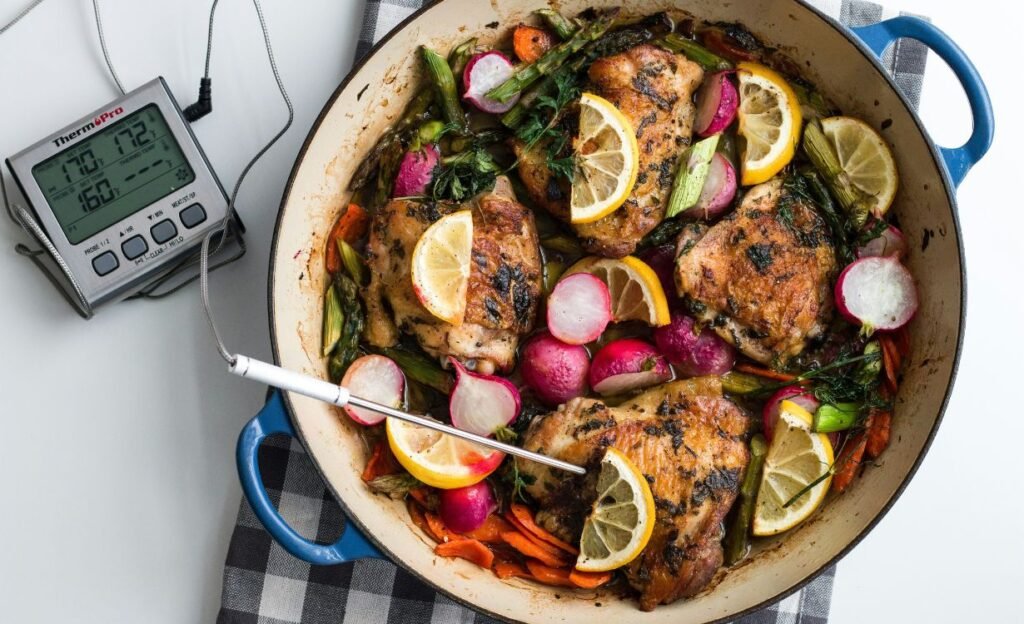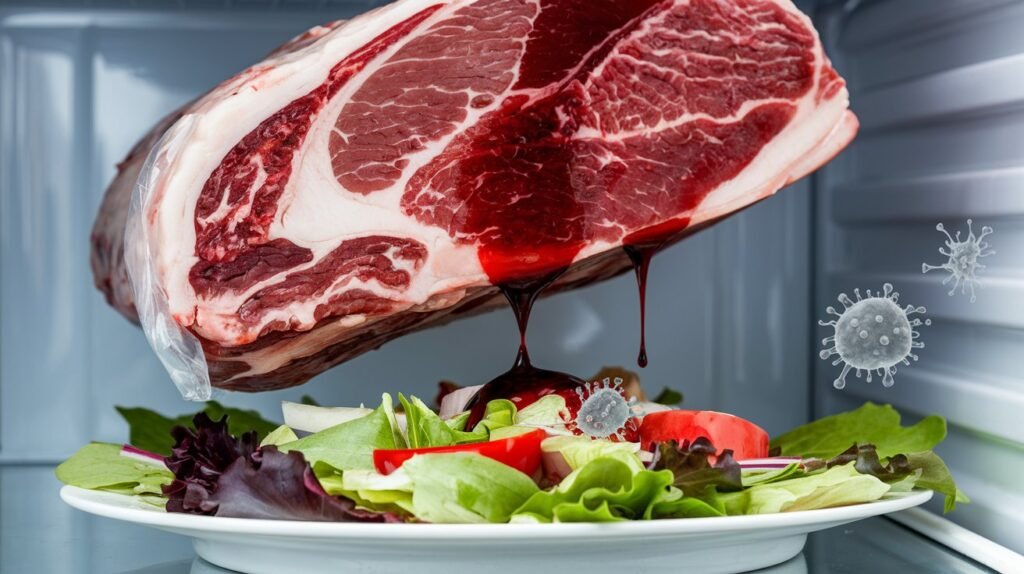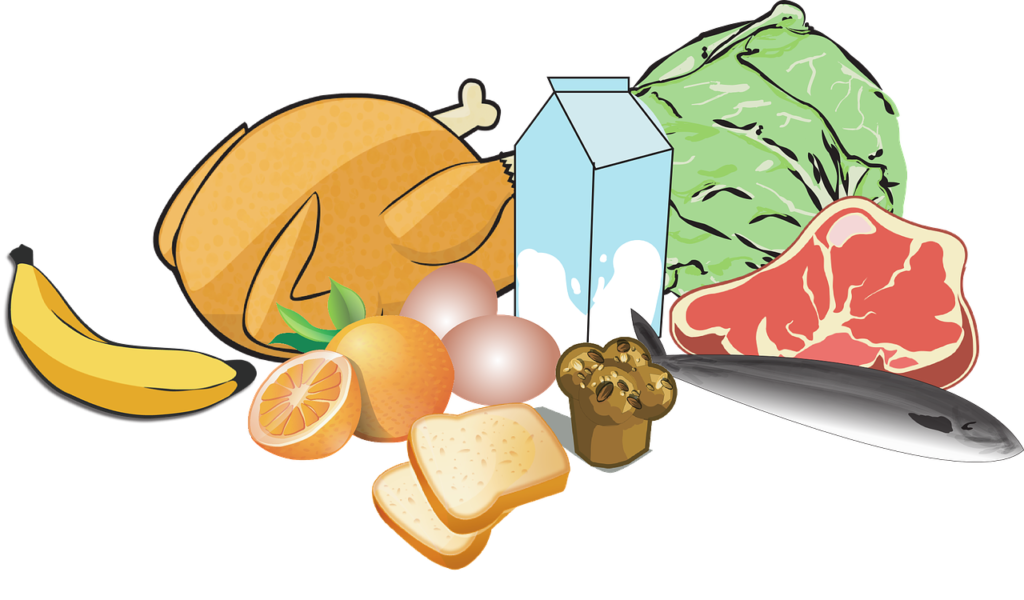Cross contamination in food preparation is a major cause of foodborne illnesses that threaten everyone all over the world.
But what exactly is cross contamination?
In this post, you can expect to learn the definition of cross contamination in food preparation, how it happens, and simple ways to avoid it.
Understanding cross contamination is key if you’re asking what is the best way to prevent poor food safety.
This issue is one of the easiest food safety hazards to prevent.
Simple actions we are about to highlight can significantly reduce the risk of spreading harmful bacteria.
Throughout this post, you’ll not only discover how cross-contamination affects public health, but you’ll also learn practical tips to prevent it in your kitchen.
What is Cross Contamination?
As defined by the USDA:
Cross contamination in food preparation happens when harmful bacteria or allergens are transferred from one surface, food, or tool to another.
This can occur in many ways:
When raw meat touches vegetables, or when the same cutting board is used for different foods without cleaning.
It’s a key factor in spreading foodborne illnesses, making it important to prevent them during food handling and cooking.
For example, using a knife to cut raw chicken and then using it for ready-to-eat food, like salad, without washing it in between can easily spread bacteria like Salmonella.
How Cross Contamination Impacts Public Health

The impact of cross contamination on public health can vary widely in severity.
This may cause the following risks:
Mild Foodborne Illnesses
In mild cases, it may lead to minor foodborne illnesses with symptoms like nausea and diarrhea that resolve quickly.
The most common cause of these symptoms can be contamination with one of the big 6 bacteria affecting our foods..
Severe Health Risks
However, cross contamination can also cause more serious infections that require hospitalization, especially in children, the elderly, and those with weakened immune systems.
For more imagination, we prepared a post about food poisoning that may need urgent care.
And recently, we heard about a major Listeria outbreak in Michigan that killed 9 persons and caused tens of hospitalized cases.
Long-Term Consequences and Fatalities
Cross contamination in food can even be fatal.
CDC estimates an average number of 3000 deaths are recorded every year due to foodborne illnesses.
Common Sources of Cross Contamination in Everyday Kitchens
So, How Can Cross Contamination Happen in the Food Preparation cycle?
Cross-contamination can occur at any stage of the food processing cycle, whether you’re at home or in the cross contamination in food industry.
Here’s a breakdown of where it can happen:
1- Food sourcing:
Contamination may start when food is sourced from suppliers that don’t follow proper hygiene standards.
If food suppliers are unaware of food safety and do not consider its safety parameters, bacteria can find their environment to grow on foods.
For this reason, food business owners need to consider close monitoring to their food material suppliers.
Storage
In your fridge or pantry, storing raw foods like chicken above ready-to-eat items like salad can allow bacteria to drip onto the food below.
This can lead to dangerous contamination of foods that won’t be cooked.
Read this article and learn more about which storage practices can cause cross-contamination
Preparation
Using the same tools and cutting boards to chop raw meat and vegetables without washing them in between is a common cause of cross contamination.
Also, another common practice is thawing raw meat at room temperature or in a fridge above other foods can allow harmful bacteria to spread through dripping liquids.
Every food handler need to take care about the nature of food material he is dealing with.
As there are some foods that are more likely to be affected than others. those are what we are calling TCS foods.
Cooking

Cross-contamination in food preparation can also occur when food isn’t cooked to the proper temperature, allowing harmful bacteria to survive.
For example, undercooking chicken to a temperature below 75°C (165°F) can leave bacteria like Salmonella or Campylobacter alive.
General role to follow, is to keep our food away from the TDZ (temperature danger zone)
Another key factor to consider is the food handler’s hygiene which is a leading factor to foodborne illnesses.
Competent food handlers are those who are aware of food safety and foodborne illnesses and how to avoid them.
They can achieve this by many practices like wearing their required PPE and taking care of their kitchen safety and sanitation.
Cross Contamination After Cooking
Cross contamination can still happen if cooked food comes into contact with contaminated surfaces or utensils.
For instance, placing cooked chicken on a cutting board that was used for raw meat without cleaning it can reintroduce harmful bacteria.
So how to avoid cross contamination
Is Cross Contamination Easy to Avoid?
For sure, we can achieve this by simple practices.
If you want to learn more, some of these practices were discussed in more detail in this post.
Awareness is the key:
Like any other field, competency, and awareness in food safety are crucial for preventing foodborne illnesses and ensuring safe meals.
Not only food handlers, but everyone has to be aware of food hazards and control measures. Even our children.
For food business owners, trained staff can maintain higher hygiene standards, leading to better customer trust and compliance with health regulations.
Food Handling: Keep Raw and Cooked Foods Separate
Very simple trick,
Food storage is crucial to prevent cross contamination in food preparation.
This does not mean that we need a vast storage space, it can be fulfilled just by better arrangements for our refrigerators.
Always use separate containers for different foods and keep them in proper storage temperature.
The Food Handler’s Role: Hygiene and Best Practices
Simple practices like using the proper PPE (personal protective equipment) and washing hands can save lives.
Do not forget that washing soaps are also chemicals that can contaminate foods leading to severe consequences. So take care of their storage away from foods.
Eater Hygiene: Reducing the Risk When Eating

Always teach your family and children how to eat safer foods.
Awareness and knowledge is a strong barrier that can protect them against foodborne illnesses.
Teach them how to wash their hands in the correct way, how to deal with leftover foods, and how to ensure the expiry dates before eating.
Cleaning the Kitchen and Tools: A Key Step to Prevent Contamination
Kitchen cleaning plays a vital role in food safety by preventing cross-contamination.
Regularly sanitizing countertops, cutting boards, and utensils removes harmful bacteria that can transfer to food.
Temperature Control: Safeguarding Food with Proper Cooking and Storage
Food must be cooked to a safe temperature and stored in a safe temperature to avoid bacterial growth.
Some tools that can help you in achieving this are the in-food thermometers and a calibrated refrigerator thermometer.
Conclusion:
Now, after having a brief idea about what is cross contamination in food, we can save our selves and our families.
In today’s post, we tried to send a message on how important is food safety.
Everyone must be aware of what is cross contamination in food preparation, and when and where can it occur.
Also, we need to be equipped with simple tools that can help us avoid any unwanted consequences.
It is a matter of your health and wellness, so be aware.



